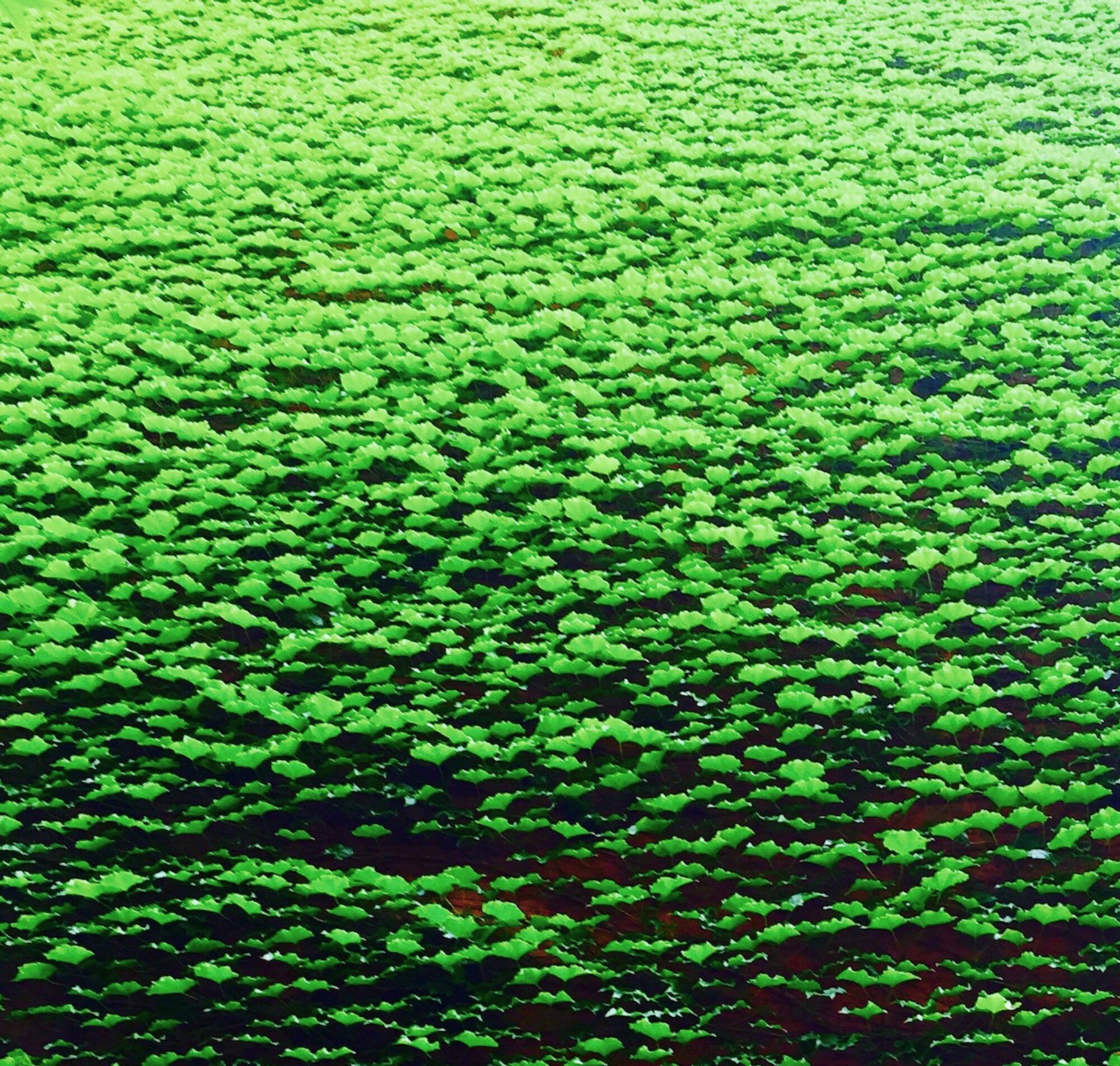Originally written 2016. This is also posted by the composting area at the back of El Sol Brillante.
Note. One of our two gardens, by the corner of 12th St & Ave B, changed its name to Down to Earth Garden on July 1, 2020. The following references that garden by its previous name, Children’s Garden.
El Sol Brillante community garden is located on 12th St between Ave A and Ave B in the East Village, NYC. A bokashi composting team is involved at three sites: El Sol Brillante, the Children’s Garden (corner of 12th St and Ave B) and Sauer Park (a children’s playground between the gardens where we help to tend its landscape).
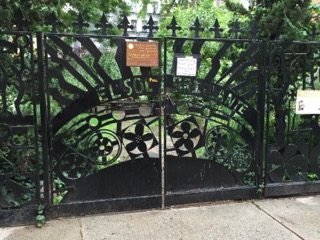
For many years, just a few members were composting their food scraps in a little black compost bin at the back of El Sol.
In 2008, the city stopped recycling the leaves and a couple of members decided to save them from going into the landfill. We dragged about 100 bags of leaves from Sauer Park to the Children’s Garden to store over the winter.


In the spring of 2009, El Sol had a huge pile of brush in the back and we had a rat epidemic. A garden member built compost bins and the garden bought an Urban Tumbler and leaf chipper. Our friends at Ciao For Now, a cafe across the street, had talked about composting their food waste and hired Action Carting to cart away and compost their food waste. We asked if we could use their food waste because otherwise we did not have enough to start composting. They were happy to give it to us. We called the Lower East Side Ecology Center (lesecologycenter.org) for help. They came and gave a composting workshop and said you have everything you need to compost: the food waste, leaves, compost bins, and Urban Tumbler. And they showed us what to do. We worked extremely hard that season and recycled about 1700 lbs of food waste and leaves.
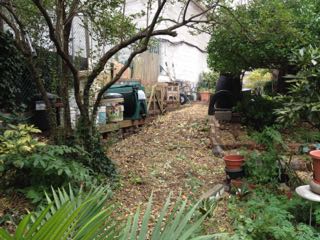
In the fall of 2009, we were introduced to the bokashi method. It is a two-step process: first, we ferment the food waste, and second, we then take the fermented food waste and bury in soil or feed it to worms (there are other ways besides these two). Bokashi means fermented organic matter and is made with Effective Microorganisms (a culture of mixed species of microbes that exist in many environments, including in our foods and in our bodies–see “The Microbes in EM-1” [link: recyclefoodwaste.org/files/Microbes%20in%20EM1.pdf]).
Our bokashi process is as follows:
- We make our own bokashi using EM-1, blackstrap molasses, water, and either wheat bran or coffee chaff.
- We take an airtight bucket with lid, sprinkle the bottom of the bucket with bokashi, then put all types of food waste, including meat and dairy in; sprinkle again with bokashi every time food waste is added and keep the lid airtight.
- When the bucket is full, let ferment for at least 2 weeks, but we usually let it sit until we’re ready to use it.
- We then bury the fermented food waste in the ground or add it to our worm bins.
The idea of burying food waste in the ground with a rat epidemic was a concern, but we found out that rats do not like fermented food waste. We experimented with great caution. At that time, we had plastic garbage bags to ferment the food waste from Ciao For Now. We buried the fermented food waste in the Children’s Garden and the rats did not go for it. We also put some into the Urban Tumbler with leaves and soil to winter over. In the spring, when we opened the Urban Tumbler, to our surprise we found millions of worms! We started worm bins. We never have to buy worms, and we give some away. The mixture of fermented food waste, leaves, and soil explodes the worm population.
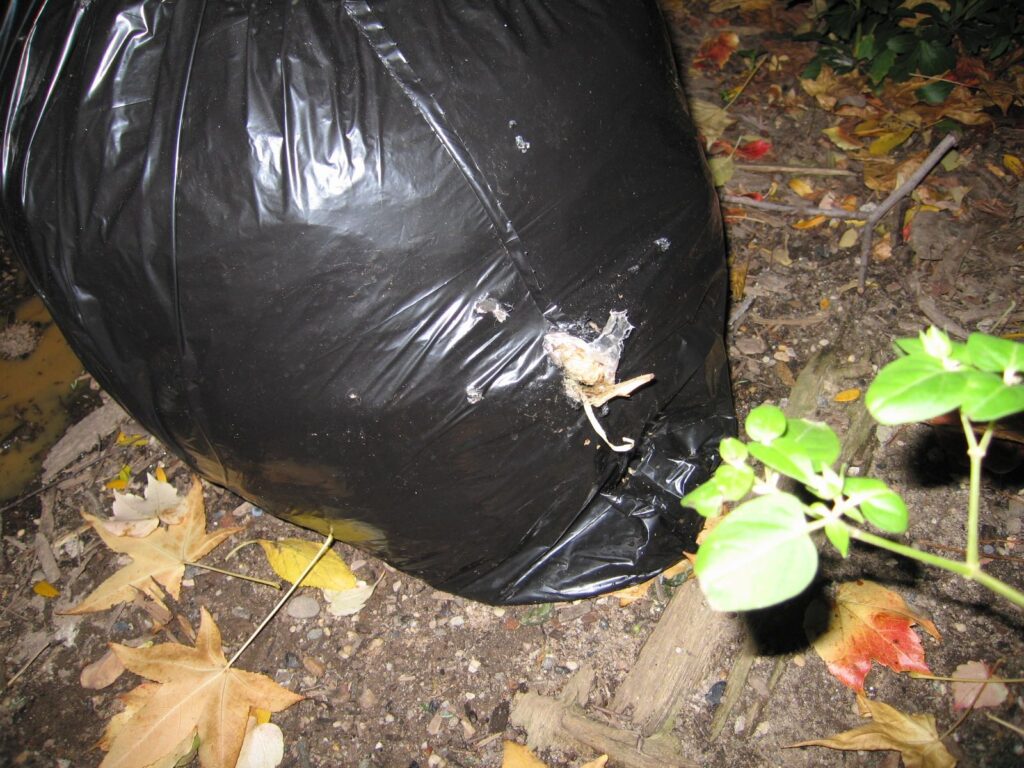
Rats just ripped a small hole, but otherwise, left it alone.
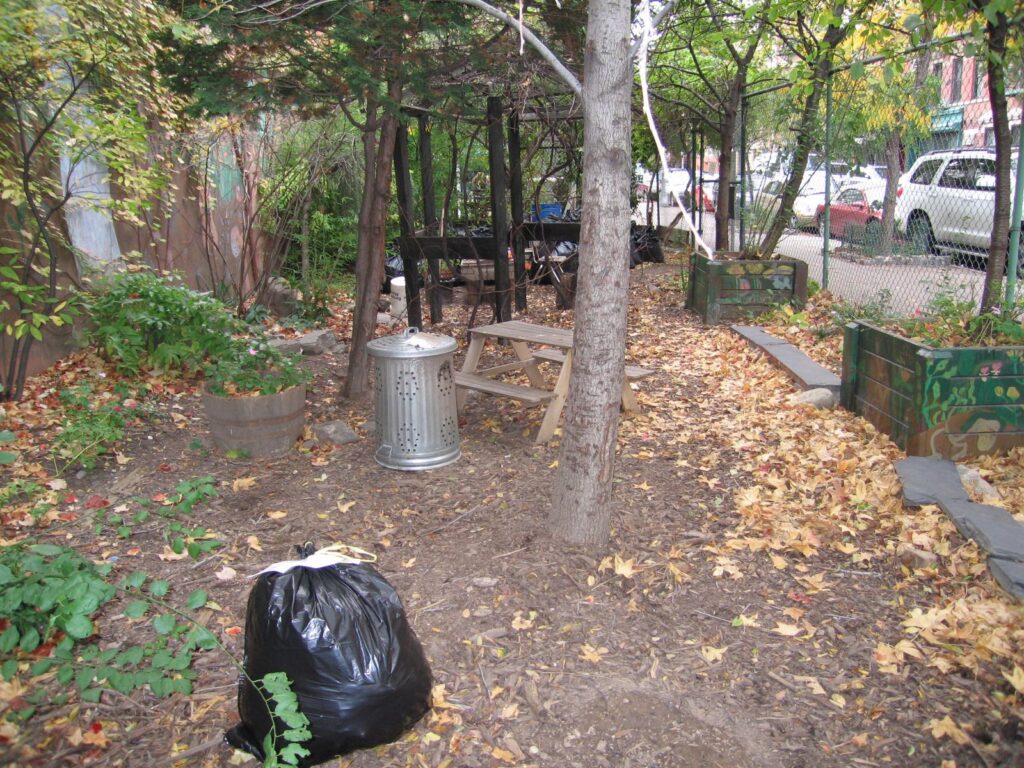
The rats left 12th Street for 3 1/2 years. They don’t like fermented food waste. Recently, a few have come back because of multiple construction in the neighborhood. But now we know that rats stay away for about 7 to 10 days after fresh fermented food waste is buried. After that time, most of the fermented food waste becomes part of the soil and doesn’t affect the rats either way.
We are now recycling over 5 tons of food waste as of 2015 [link: https://downtoearthgarden.org/activities/composting/] with rotating volunteers of up to 5 people. All of the food waste is from people in the community. We stopped taking food waste from Ciao For Now years ago.
There are 2 drop-off sites. The Children’s Garden is a 24/7 drop-off site. We leave a loose chain on the gate so people can put their food waste in a rat proof bin. Volunteers help to transfer the food waste into 20-gallon airtight bins and add the bokashi in layers. El Sol Brillante has a drop-off only when members are there and the gate is open.
There is a home-to-garden bucket program. People get a 3-1/2 gal. bucket and a gallon ziploc bag of bokashi and they start the fermentation process in their kitchen. They bring the full bucket to either garden to empty their buckets into the 20-gallon bins and get more bokashi.
Most of the food waste has been buried in the Children’s Garden. In 2008, the soil was dead and contaminated with heavy metals. Now it is full of life, rich, and the lab results showed reduction of heavy metals (see also soil testing).
We are able to trench throughout the winter at the Children’s Garden because the fermented food waste makes the soil microbe-rich and keeps from freezing. The bags of leaves we save are spread over the ground every fall and helps soften the ground as well.
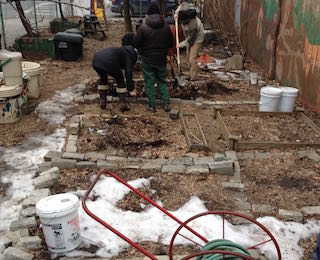
Because the soil at the Children’s Garden has improved so much we are ready to move on to other gardens that need soil amending. This coming Spring will be the 3rd year of trenching at Campos West (13th Street and Avenue B, also known as Relaxation Garden). The soil is very poor and there is a rat problem. We may be trenching there for years to improve the soil.
From our experience, the bokashi method of recycling food waste has been low maintenance, low tech, and produces high quality soil amendment. The microorganisms do the work.
Because the bokashi method of recycling food waste could be such an effective way to divert food waste from the landfill, we decided to apply for the Citizens Committee of NYC compost grant for $750. There is now an itemized list of all the materials and cost needed to set up the bokashi system and is available [link: recyclefoodwaste.org/files/bokashiCompostingMaterials.pdf] (see other itemized lists here: recyclefoodwaste.org) for other gardens to use to apply for the grant. Campos Community Garden (12th St between Ave B and C) got the grant in 2012 and has been using bokashi ever since, and other gardens have also applied for the compost grant with the bokashi information, as well.
This year (2016), we received another grant from the Citizens Committee of NYC for $700 to expand on our composting system (tools and materials to repair our worm bin, build new worm bins and a trommel/sifter).
We work with the master composters from the Lower East Side Ecology Center and Earth Matter NY, and we give free apprenticeship to the public.
If you are interested in a free tour of the 12th Street Bokashi Model, or an orientation to our bokashi process, or the bokashi workshops, send email to shig@recyclefoodwaste.org or use our Contact page.
For details on bokashi composting, visit recyclefoodwaste.org.
